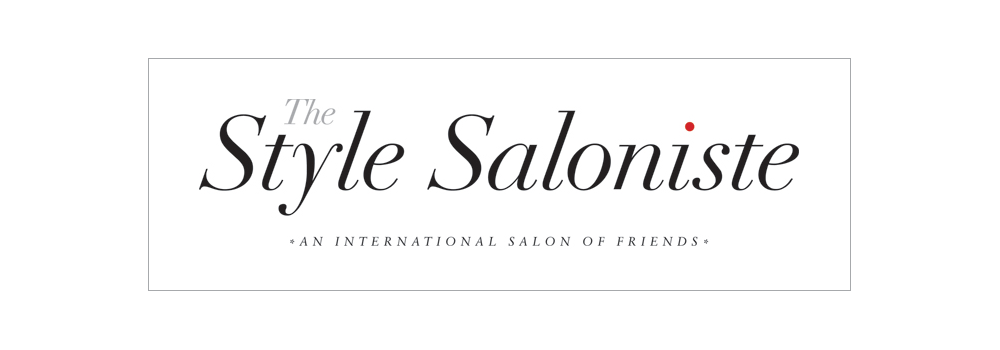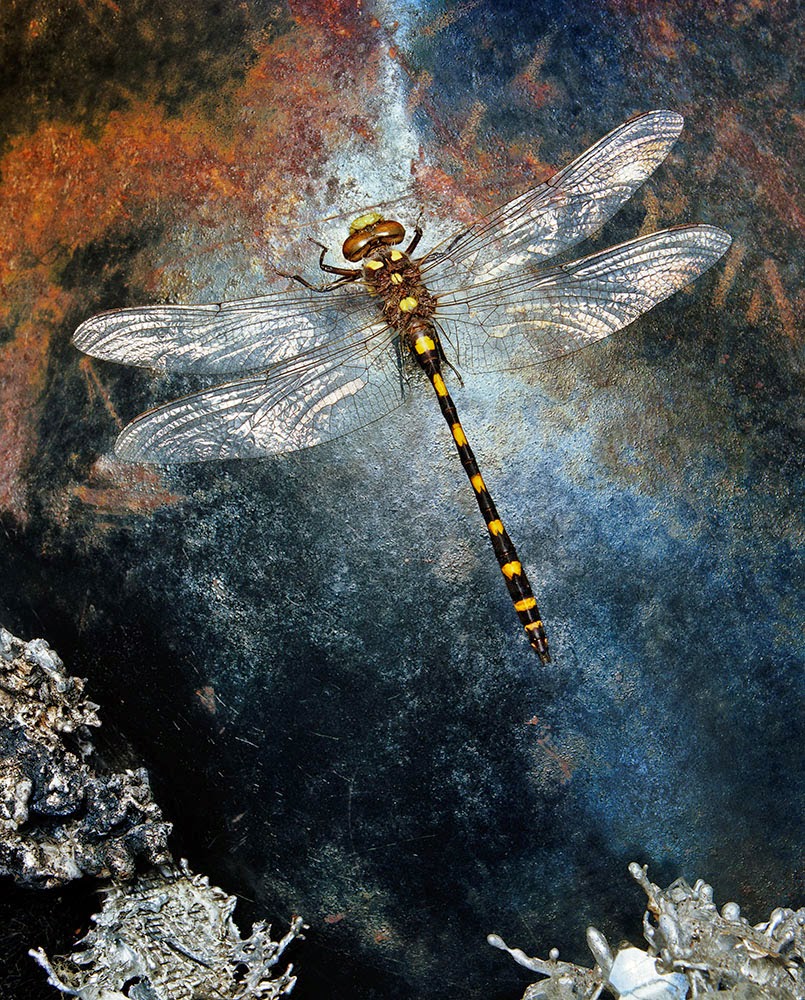This week on THE STYLE SALONISTE I have dramatic and thought-provoking images to make your brain sparkle and tingle and to instantly grow more dendrites.
The dramatic and highly original photographs are by Jo Whaley—a dedicated photographer who has been exhibiting for the last twenty-eight years. I discovered her in a book published by Chronicle Books in 2008, ‘The Theater of Insects’.
Jo’s images—still lives—are in the classical tradition of the great Dutch masters but hers have a modern aspect, a contemporary point of view. Like the Dutch painters she alludes to the beauty and glory of nature and at the same time the brevity of life. And her subtext presents, with great delicacy, a post-industrial meditation. But most of all—they are simply glorious and technically daring images.
Come with me this week to meet Jo’s work face-to-face and to consider her bracing point of view, the twists of her mind, her virtuoso craftsmanship and her supreme technical mastery.
The printed images vary in size from 8”x 10” to 24”x 30” .
Who is Jo Whaley?
Jo Whaley has lifelong roots in the San Francisco Bay Area. She had earned advanced degrees in Art and Photography from the University of California, Berkeley by 1980.Whaley originally studied to become a painter and later took a day job as a scenic artist for the San Francisco Opera and other Bay Area theatrical companies. Her theater experience informs her photography, in which she creates stage sets and employs numerous props, painted backdrops and dramatic lighting.
All of her photographic series fuse the language of photography with the language of painting and rely on an expressive use of color.
The Classical Concept of Still Life Images
Jo Whaley comments:“Each element in a still life contributes to the narrative of the image. The staged sets for these insects use cast-off materials from urban production, which have been partially reclaimed by nature. These include metal that has gone through fire, glass that has become oxidized and iridescent in the earth, plastic that has been pitted by the sea, and paper that is foxed by microorganisms.
These found objects are chosen for the visual poetry written in their deterioration and imperfection. In this work, the animating spirit is the Japanese aesthetic known as wabi-sabi, which celebrates the state of decay as a spiritual reflection of life itself and above all reveres nature. As opposed to the ancient Greek aesthetic of ideal beauty, with its regular proportions and flawless perfection, wabi-sabi sees beauty emerging from ugliness, such as the painterly transmutation that occurs when a piece of metal rusts. Likewise, some insects may seem repulsive at first, but close observation reveals their expressive power.”
Collections
Jo Whaley’s work is held in the permanent collections of many museums, including the Los Angeles County Museum of Art, the Philadelphia Museum of Art and the San Francisco Museum of Art. Her touring exhibit “The Theater of Insects” opened at the National Academy of Sciences, Washington, DC in the Fall of 2008, followed by the Museum of Photographic Arts, San Diego It has continually toured to museums concluding in 2013, at The Henry Fox Talbot Museum, Lacock Abbey, UK. A monograph, “The Theater of Insects” was published by Chronicle Books.Jo Whaley received one of the last National Endowment Visual Artists Fellowships in 1994 for her “Natura Morta” series. She received numerous grants to work with the Polaroid 20x24 camera in New York between 1989 and 1993 for her series of nudes, entitled “Global Folly”. She keeps studios in Santa Fe, NM and Berkeley, CA and shares her life with the photographer Greg Mac Gregor.
Jo Whaley lives in Oakland, California, and Santa Fe, New Mexico.
It’s the beauty and power and thrilling imagery and suggestion of her work that enthrall me and offer chills and reverie
Whaley, in a special recent collection, photographed insects and butterflies. That alone would be exciting. But it’s her allusions to the traditions of classical still life styles—as well as her use of staged sets that use cast-off materials from factory production, mechanically made, that create poetry and power.
Jo Whaley Notes:
“ Manufactured objects and insects have appeared together before in art history. In the European iconography from the sixteenth to the eighteenth centuries, the insect in still-life painting symbolized the transient nature of all life, as an insect’s life span is literally short and some insects assist in the deterioration of matter.“These paintings were cautionary tales with their sumptuous displays of earthly bounty and material wealth, while characteristically including a clue to mortality, such as a skull or an architectural fragment and inevitably a crawling insect. They warned that whatever humans create is in fact fleeting and that all wealth is mere vanity in the face of death. Ultimately, decay and entropy take their toll on every human endeavor.
“This classic theme of vanitas is carried forward in my photographs, but with the insect featured as the main subject. To reinforce this concept in the work, the specimens are depicted not in their actual size, but rather their scale is large, approximately the size of a human head. The viewer thus confronts the insect on a one-to-one relationship, as an equal, calling into question the perceived human dominance over nature.”
Technical Details
Process: This series was shot in the studio using strobe lighting. The series began with film using a Mamiya RB 6x7, and creating Chromogenic photographs. Eventually I switched to the digital medium using a Canon 5D Mark 11 camera and printing archival pigment photogrash. The size of the images ranges from 8x10” to 24”x30”.Jo Whaley Tells Us:
“ These photographs are fantastical field illustrations. While the insects in these images are real, the backgrounds are imaginary altered habitats of my own creation. Inspired by the old dioramas found in natural history museums, the pinned insects are arranged in constructed environments. ““The studio where I create the images is as much a theatrical scene shop as it is a photography studio. The prop room looks like an eighteenth-century cabinet of curiosities, in that it is filled with specimens of natural history and visual oddities of manufacture. I use free association and intuition to make decisions about arranging the insect with a particular backdrop. Looking at color, shape, and form, I move the elements about until the magic of the image appears. “
“Lighting the scene is challenging as the sets are only about five by seven inches across with a depth of about an inch and a half. Yet the studio lighting is key to breathing a spirit into these pinned specimens and unifying the disparate elements within the mise-en-scène Finally, the performance of the image is concluded with a single click of the camera’s shutter.”
Process
“I approach photography as a theatrical expression. For this series, I use the color shape and form of the insect as a starting point for designing the set, keeping in mind the concepts of mimicry and camouflage.Lighting the scene is challenging as the sets are only about 13 cm by 18cm across with a depth of about 4 cm. Yet, the studio strobe lighting is key to breathing a spirit into these pinned specimens and unifying the disparate elements within the mise-en-scène.
Finally, the performance of the image is concluded with a single click of the camera’s shutter. The series began with film using a Mamiya RB 6x7, and creating chromogenic photographs. Eventually the switch was made to the digital medium, using a Canon 5D Mark 11 camera and printing archival pigment photographs.
Artist Statement
Within the series is a new development, which I call “The Portrait of Psyche For the Ancient Greeks”. The word for butterfly was the same word for the human soul.That word was Psyche, the root of our word psychology. Psyche was also the name for the Goddess of Love in Ancient Greece.
The photographs in this series depict butterflies paired with portraits of anonymous individuals whose souls have long ago departed. In fact, the tintypes and glass plates that carry their visage show signs of decay, so that even the portraits of these individuals are disappearing with the passage of time. The result is the melancholy beauty of entropy mixed with the gemlike exquisiteness of the butterflies. Nature, art and science are entwined.
The Theater of Insects
Butterflies, beetles, dragonflies and other colorful insects take center stage in this collection of Jo Whaley’s photographs.The photographs show insects in altered habitats that reflect a compromised natural environment. Entomology specimens are juxtaposed with backgrounds which are composed of cast-off materials from urban production, which have partially been reclaimed by nature; such as metal that is rusted, paper that is foxed by microorganisms and plastic pitted by the sea. The result is a world of nature, intermixed with the man in manufacture, and the melancholy beauty of entropy.
Credits
All images here copyright Jo Whaley. Images used with express permission of Jo Whaley. www.jowhaley.com
This series was shot in the studio using strobe lighting. The series began with film using a Mamiya RB 6x7, and creating Chromogenic photographs. Eventually I switched to the digital medium using a Canon 5D Mark 11 camera and printing archival pigment photogrash. The size of the images ranges from 8x10” to 24”x30” .
Publication
The Theater of Insects
Photographs by Jo Whaley
Essays by Linda Wiener and Deborah Klochko and Jo Whaley
Published by Chronicle Books, 2008.
Gallery Representation
Santa Fe, NM
Photo-eye Gallery
www.photoeye.com
Scottsdale, AZ
www.photoeye.com
Scottsdale, AZ
Lisa Sette Gallery
www.lisasettegallery.com
La Jolla , CA
www.lisasettegallery.com
La Jolla , CA
Joseph Bellows Gallery
www.josephbellows.com
San Francisco
www.josephbellows.com
San Francisco
Robert Koch Gallery
www.kochgallery.com
Palm Beach, FL
www.kochgallery.com
Palm Beach, FL
Holden Luntz Gallery
www.holdenluntz.com
Los Angeles
www.holdenluntz.com
Los Angeles
Thomas Paul Gallery
www.tpaulfineart.com
www.tpaulfineart.com





























1 comment:
Hello Diane, I just stumbled upon your blog, and I must say that it is AMAZING!!!!! Thanks for your creativity and insight. I found your blog after clicking on a picture on Pinterest, which featured a lovely greek key table that caught my eye. The post is rather old (from 2012) and it was a post entitled "Dazzling New San Francisco Apartment: Architecture by Andrew Skurman, Interiors by Andrew Fisher and Jeffry Weisman". I know this may be a long shot, but I am trying to find out specific details on the greek key design table that was in the small bedroom. Would you happen to have any further details on the seller/designer of such vintage table? PLEASE let me know. Thanks. Shameeka
Post a Comment